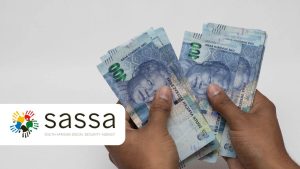In an increasingly digital economy, scams involving fake proof of payment documents are becoming more sophisticated and prevalent in South Africa. From online marketplaces and small businesses to large-scale service providers, anyone accepting electronic payments is at risk. Criminals forge payment confirmations to deceive sellers into releasing goods or providing services without actual funds being transferred. Understanding how to identify a fake proof of payment is critical for protecting yourself and your business.
Here is a comprehensive guide to spotting red flags and adopting preventative strategies to reduce your vulnerability.
1. Urgency or Pressure to Deliver Goods
One of the most common tactics scammers use is to create a sense of urgency. They may claim they need the product or service immediately and pressure you into releasing it before verifying the payment. This tactic relies on emotional manipulation, making you feel guilty or rushed so you don’t have time to double-check the transaction.
What to do:
Always give yourself time to confirm payment. If a buyer insists on same-day delivery or immediate access to services without allowing time for verification, treat the transaction with caution.
2. Use of Unusual or Suspicious Payment Channels
Legitimate payments in South Africa typically occur through standard banking channels such as EFT (Electronic Funds Transfer), card payments, or mobile payments like SnapScan and Zapper. Scammers, however, may claim to have paid using cryptocurrencies, international wire transfers, or gift cards—methods that are difficult to trace and nearly impossible to reverse.
What to do:
Avoid transactions involving non-traditional payment channels unless you are fully familiar with the process and can independently verify the funds.
3. Overpayments Followed by Refund Requests
A common fraud involves the scammer “accidentally” overpaying for a product or service and then requesting a refund of the excess amount. For example, if the total was R3,000, the scammer may send a fake receipt for R5,000 and ask you to refund R2,000.
What to do:
Do not issue any refunds until the payment has cleared in your account. Remember, just because you receive a payment confirmation doesn’t mean the money has reached your bank.
4. Suspicious Payment Notifications
Fraudsters often send fake SMS or email payment confirmations. These messages may appear to come from a bank but typically contain inconsistencies such as:
Grammar or spelling errors
Strange formatting
Unusual sender addresses or international numbers
Incorrect account information
What to do:
Compare the format of the message with previous legitimate payment notifications from your bank. If in doubt, contact your bank directly using a verified contact number or through their app or website.
5. Fake or Edited Documents
Using image editing software, scammers can fabricate realistic-looking EFT receipts, bank deposit slips, and payment confirmations. These may include your business name, reference numbers, and even bank logos, making them appear authentic at first glance.
What to do:
Scrutinize the document for:
Blurry or mismatched fonts
Pixelated logos
Misaligned text
Lack of standard bank formatting
Compare it to previous genuine proof of payment documents if available.
6. Mismatched Bank Details
A legitimate proof of payment should include the payer’s bank account number and name. If these details do not match what the buyer previously provided or seem inconsistent with prior communications, it’s a major red flag.
What to do:
Cross-reference the payment information with your customer records. Call the client directly (not via email or messaging platforms) to confirm any changes in banking information.
7. No Funds Received in Your Account
The most definitive red flag is when you have not received the funds in your actual account. Regardless of how convincing the receipt or notification may be, do not release goods or provide services until your bank confirms that the funds are available and cleared.
What to do:
Log into your internet banking profile or visit your branch to verify transactions. Do not rely solely on emailed statements or notifications.
8. Unprofessional or Poor Document Formatting
Scammers may overlook small formatting details that can help you identify a fake. Authentic documents usually have consistent fonts, clean layouts, and professional logos. Fake documents may appear:
Cluttered
Misaligned
Unbranded
Containing grammatical errors
What to do:
When in doubt, contact your bank’s fraud division to verify the authenticity of any document or notification.
Precautionary Steps to Take
To reduce your risk of falling victim to these scams, implement the following security measures:
Use bank verification tools such as immediate payment confirmation or payment notification services offered by South African banks.
Enable two-factor authentication on email and banking accounts to prevent account takeovers.
Verify the source of all communications related to payments.
Keep detailed transaction records and ensure all refunds, if ever necessary, go through verified and traceable channels.
Report suspected fraud to SAPS and the South African Banking Risk Information Centre (SABRIC).
Check also: How to Get Proof of Account in South Africa Without Online Banking
Fake proof of payment scams continue to evolve, but with vigilance and a structured verification process, you can significantly reduce your risk. Never let urgency override caution, and always verify payments through official banking channels before taking action. Whether you’re a small business owner or an individual seller, staying alert to these red flags can protect your finances and your reputation.










